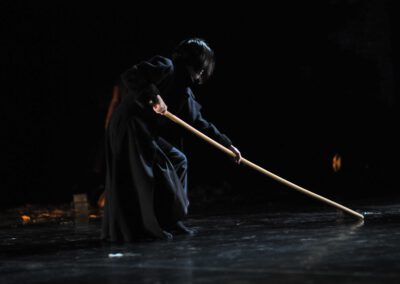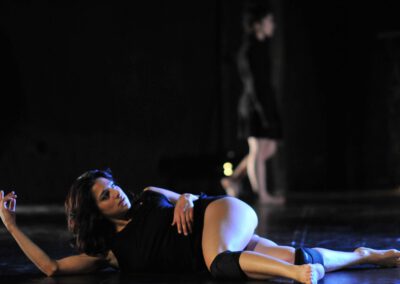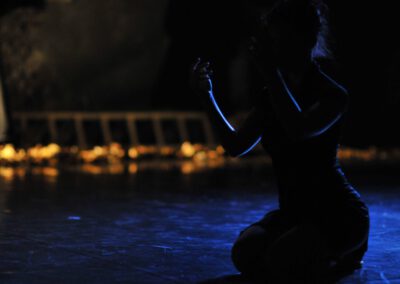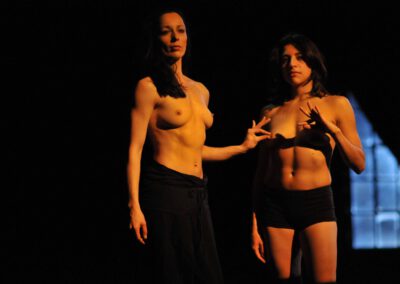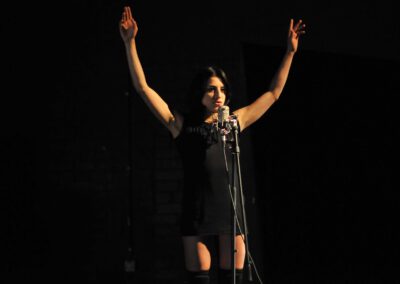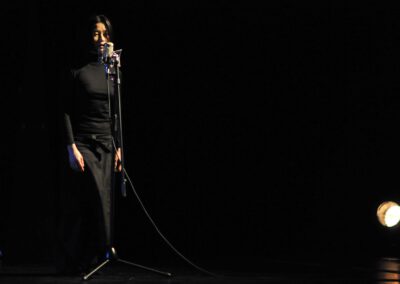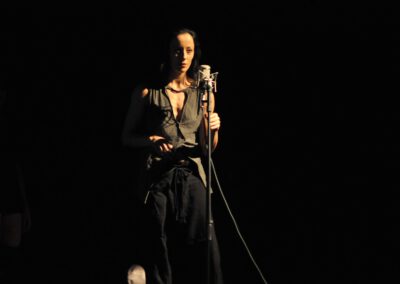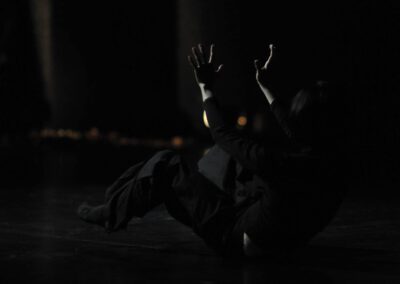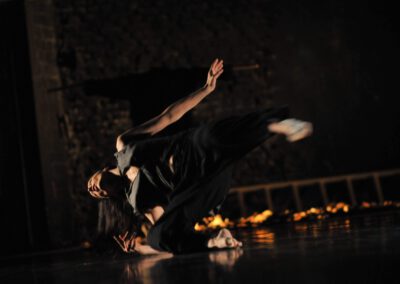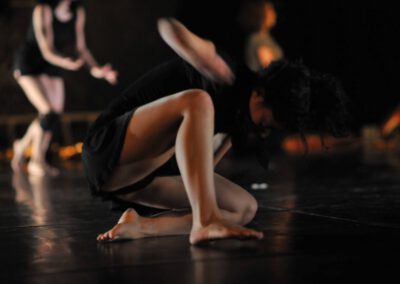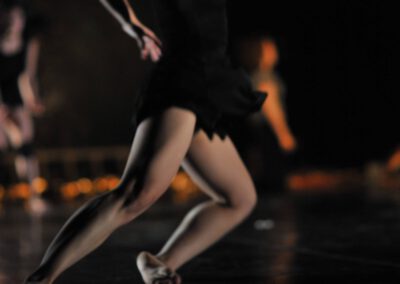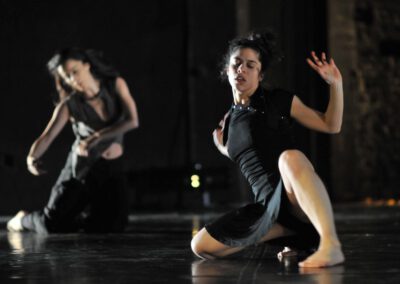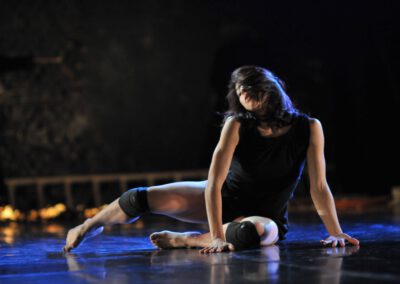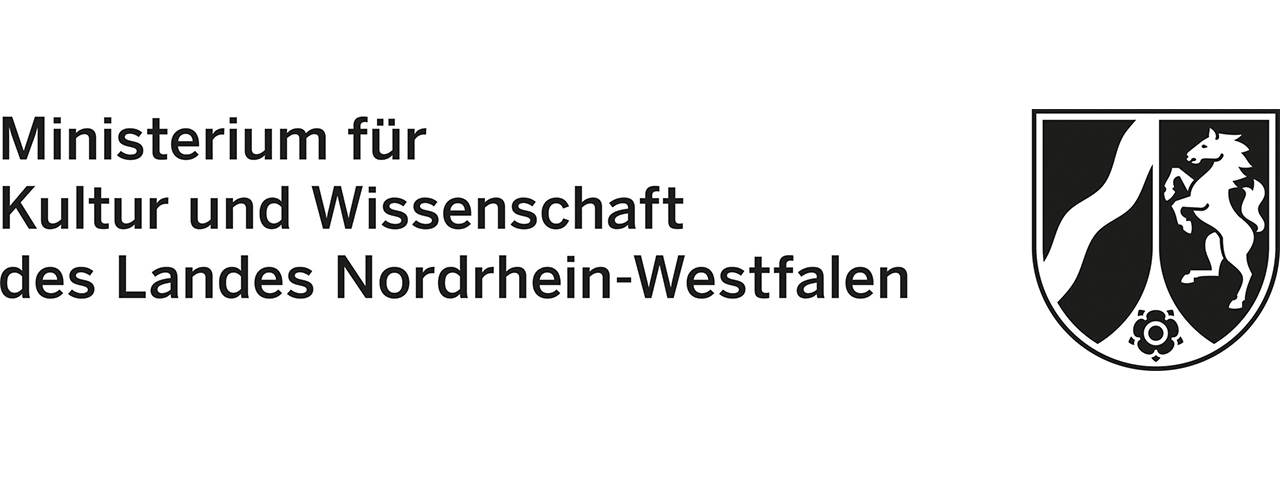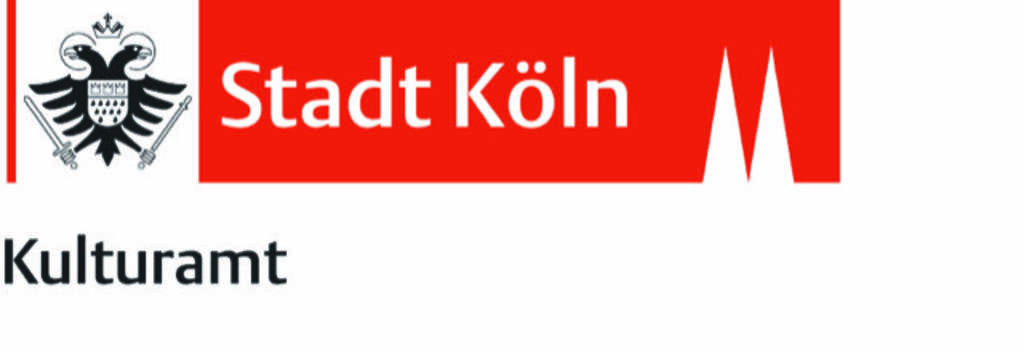WOMEN AMONG THE HORSES
Productionperiod: 2010
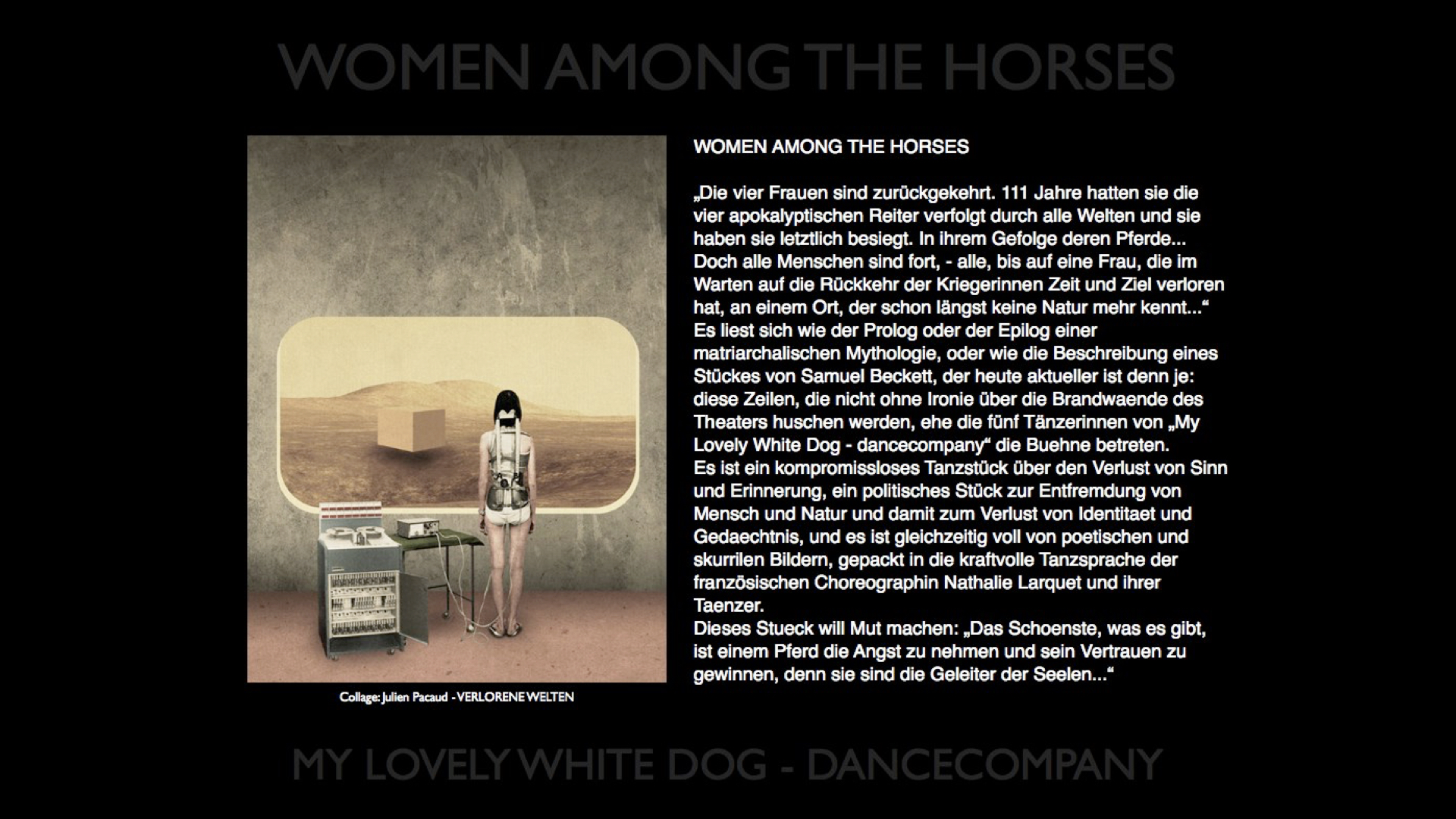
WOMEN AMONG THE HORSES
“The four warriors are back. They chased the warriors of the apocalypse through the worlds for 111 years and finally won the battle. They return with the horses of the fallen knights….but there are no humans left on Earth, only one woman who still lives in a place without nature. She has forgotten the reason for her waiting and has no awareness of time and space (the text is projected onto the wall of the theatre, not without a certain irony….. before the dancers enter the stage).
The situation of the piece could resemble the prologue or epilogue of a mythical epic with a matriarchal character, or the description of a play by Samuel Beckett (Endgame), whose theme coincides with current events.
It is an uncompromising play about the loss of the senses and memory, a committed play that speaks of the alienation between people and the world.
The alienation of people from their environment, which manifests itself in a loss of identity and memory.
Although the theme is pessimistic, the images are poetic and animated with a certain humour that is characterised by the absurd. The French choreographer Nathalie LARQUET, together with her dancers, has contributed to a powerful artistic language. The aim of the piece is to give the courage….. to live in the here and now without fear. In the world of horses, the beauty lies in taking away the horse’s fear in order to gain its trust,….. Since time immemorial, in ancient civilisations, the horse has been a psychopomp …. that guides souls.
COLD WINTER NIGHT
‘WOMEN AMONG THE HORSES’ by MY LOVELY WHITE DOG-dancecompany at the Alte Wachsfabrik
Deep in snow on a freezing cold night, far away from the city centre, the wax factory lies there on this evening. A fairytale ambience, but you can also sense the hostility of the landscape. Unprotected, there would be no chance of surviving for long. The dance performance ‘Women among the Horses’ by Nathalie Larquet fits in with this wintry cold. At the beginning, a woman in light-coloured clothing sits forlornly next to a horse saddle in the dark. A curtain hanging in front of a window opens and hard white light falls on the scene. Four other women dressed in black and wearing blindfolds join them. They walk through the room, groping, searching, talking incomprehensibly to each other. In between, the woman from the beginning dances a desperate dance. She lies on the floor, stretches all her limbs upwards, bows her head, stands on her knees, shakes her upper body with an expressionless expression. What has happened to her? What has she experienced? The scene is enigmatic, dark and mysterious. Again and again, bizarre images emerge: One of the women comes in with a tree stump with a knife stuck in it, another draws large circles on the floor with a long wooden stick, a third paints her lips red and kisses her legs with them in provocative poses.
Each dances on her own. Contact is rarely made. They all seem to be trapped in their own bodies like prisoners who can no longer find a way out, wandering aimlessly. The dance language – in a choreography by Nathalie Larquet (who also dances herself) – speaks for itself, is powerful and exciting. Thematically, as a video projection at the beginning explains (as does the programme note), it is about a doomsday mood, the alienation of man from nature, loss of identity and memory. Major themes that are realised associatively through atmospherically dense images – without providing answers. The set is mainly made up of withered leaves in which the dancers repeatedly turn and roll around: a barren, lost place, gloomy, lonely and wintry, a poetic parallel world. There is a glimmer of hope at the end, when one of the four dancers dressed in black places a reassuring hand on the fifth woman’s shoulder. And with this spark of warmth and comfort, the audience is released back into the icy snowy night.
Stephanie Torloxten
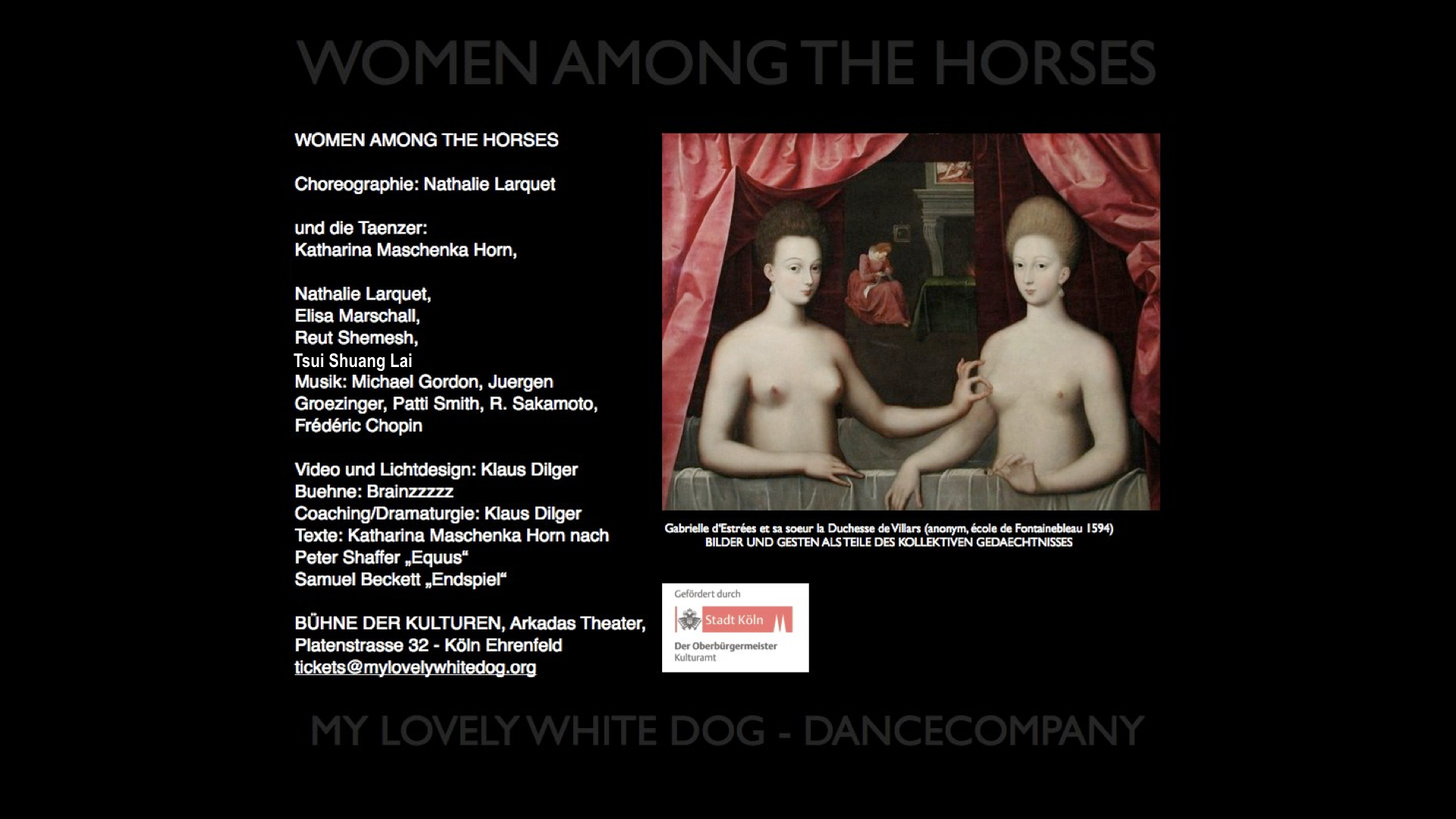
WOMEN AMONG THE HORSES
choreographer:
Nathalie Larquet
dancers: I Fen Ling / Tsui Shuang Lai, Elisa Marshall, Reut Shemesh, Katharina Maschenka Horn, Nathalie Larquet
Light- and mediadesign:
Klaus Dilger
Composition & Music:
Jürgen Grözinger, Michael Gordon, Patti Smith, Frédéric Chopin, Sakamoto
Texts: Peter Shaffer “EQUS” and Katharina Maschenka Horn
Premiered: Bühne der Kulturen / Cologne

